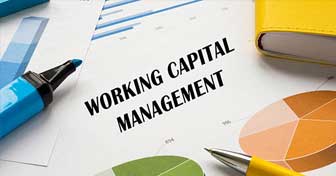Success in business is often measured in profitability — and that’s hard to argue with. However, liquidity is critical to reaching the point where a company can consistently turn a profit.
Even if you pile up sales to the sky, your bottom line won’t flourish unless you have the cash to fund operations to fulfill all those orders. The good news is there’s a tried-and-true way to stay liquid while you grow your company. It’s called working capital management.
Multifunctional metric
Working capital is a metric — current assets minus current liabilities — that’s traditionally used to measure liquidity. Essentially, it’s the amount of accessible cash you need to support short-term business operations. Regularly calculating working capital can help you and your leadership team answer questions such as:
- Do we have enough current assets to cover current obligations?
- How fast could we convert those assets to cash if we needed to?
- What short-term assets are available for loan collateral?
Another way to evaluate liquidity is the working capital ratio: current assets divided by current liabilities. A healthy working capital ratio varies from industry to industry, but it’s generally considered to be 1.5 to 2. A ratio below 1.0 typically signals impending liquidity problems.
For yet another perspective on working capital, compare it to total assets and annual revenue. From this angle, working capital becomes a measure of efficiency.
Working capital requirement
The amount of working capital your company needs, known as its working capital requirement, depends on the costs of your sales cycle, operational expenses and current debt payments.
Fundamentally, you need enough working capital to finance the gap between payments from customers and payments to suppliers, vendors, lenders and others. To optimize your business’s working capital requirement, focus primarily on three key areas: 1) accounts receivable, 2) accounts payable and 3) inventory.
High liquidity generally equates with low credit risk. But having too much cash tied up in working capital may detract from important growth initiatives such as:
- Expanding into new markets,
- Buying better equipment or technology,
- Launching new products or services, and
- Paying down debt.
Failure to pursue capital investment opportunities can also compromise business value over the long run.
3 critical areas
The right approach to working capital management will obviously vary from company to company depending on factors such as size, industry, mission and market. However, as mentioned, there are three primary areas of the business to focus on:
1. Accounts receivable. The faster your company collects from customers, the more readily it can manage debt and capitalize on opportunities. Possible solutions include tighter credit policies, early bird discounts and collections-based sales compensation. Also, continuously improve your administrative processes to eliminate inefficiencies.
2. Accounts payable. From a working capital perspective, you generally want to delay paying bills as long as possible — particularly those from noncritical suppliers, vendors or other parties. One exception to this is when you can qualify for early bird discounts. Naturally, delaying payments should never drift into late payments or nonpayment, which can damage your business credit rating.
3. Inventory. If your company maintains inventory, recognize the challenge it presents to working capital management. Excessive inventory levels may dangerously reduce liquidity because of restocking, storage, obsolescence, insurance and security costs. Then again, insufficient inventory levels can frustrate customers and hurt sales. Be sure to give your inventory the “TLC” it deserves — including regular technology upgrades and strategic reconsideration of optimal levels.
The right balance
It isn’t easy to strike the right balance of maintaining enough liquidity to operate smoothly while also saving funds for capital investments and an emergency cash reserve. Our firm can help you assess precisely where your working capital stands and identify ways to manage it better.
© 2024




